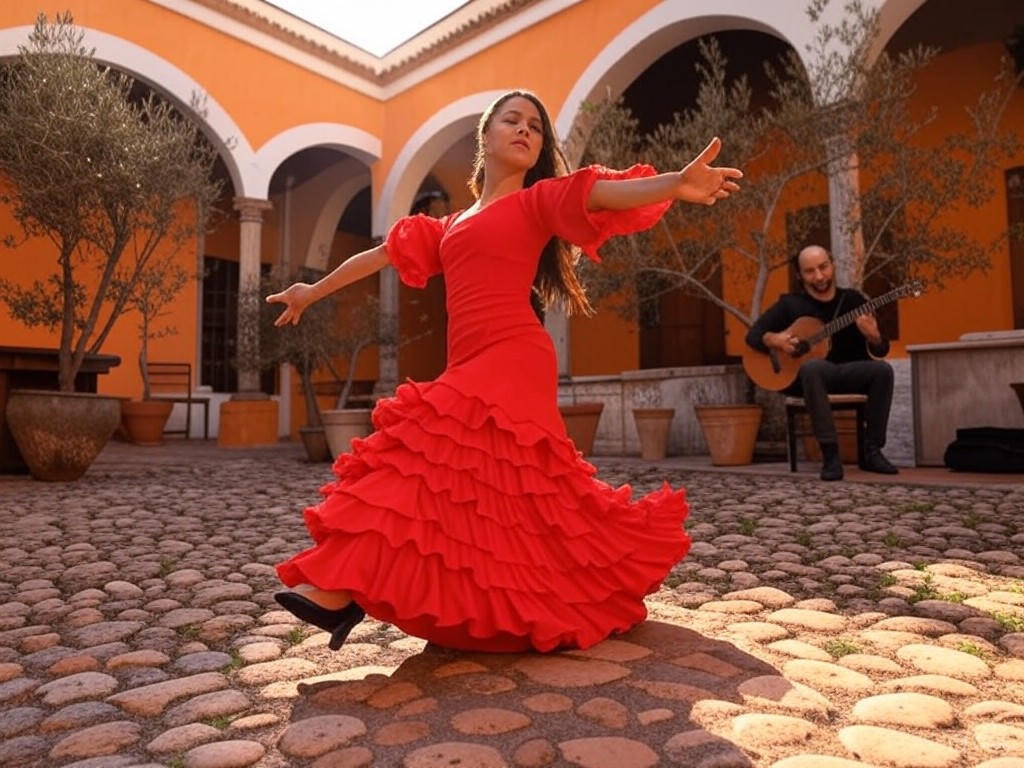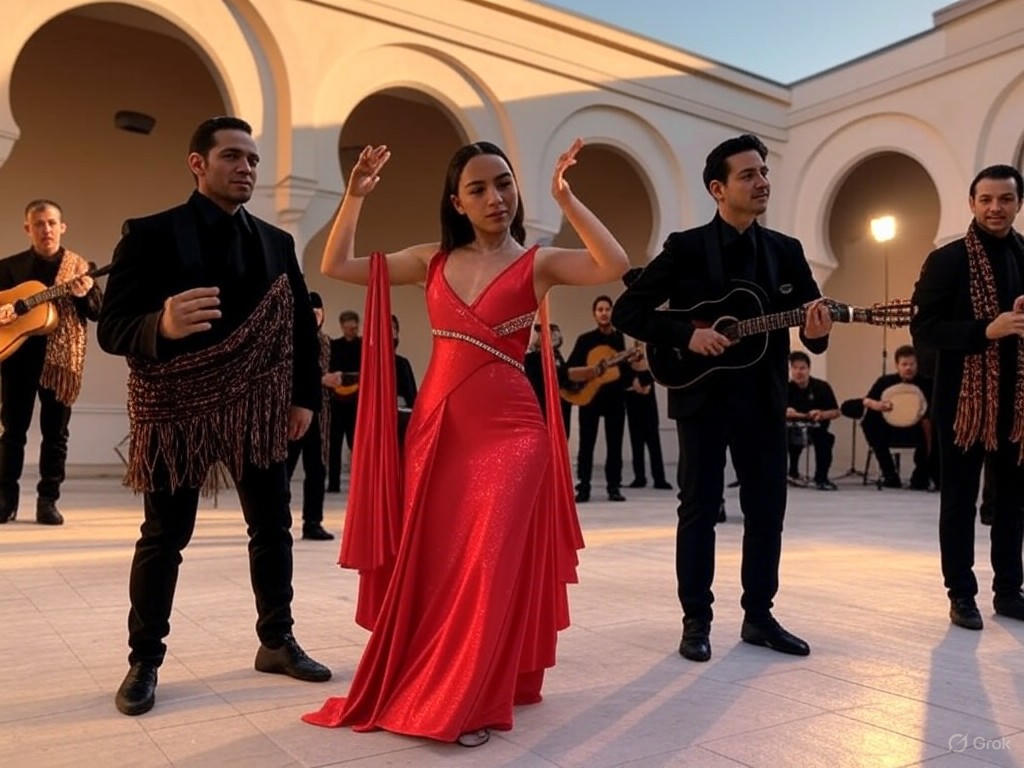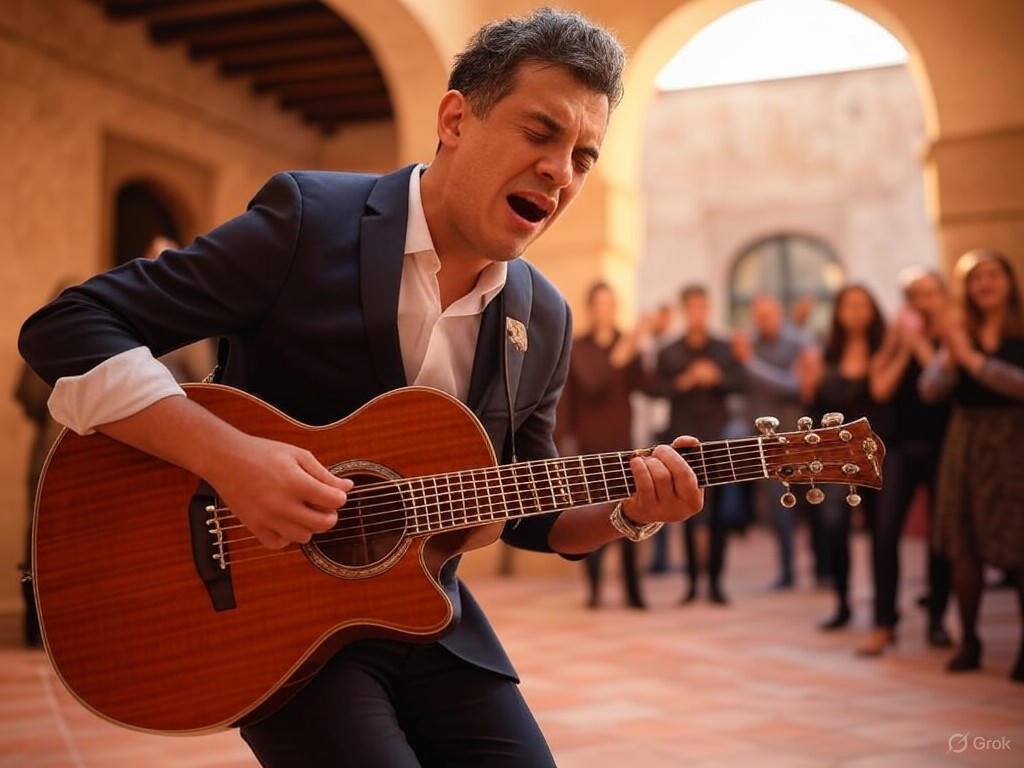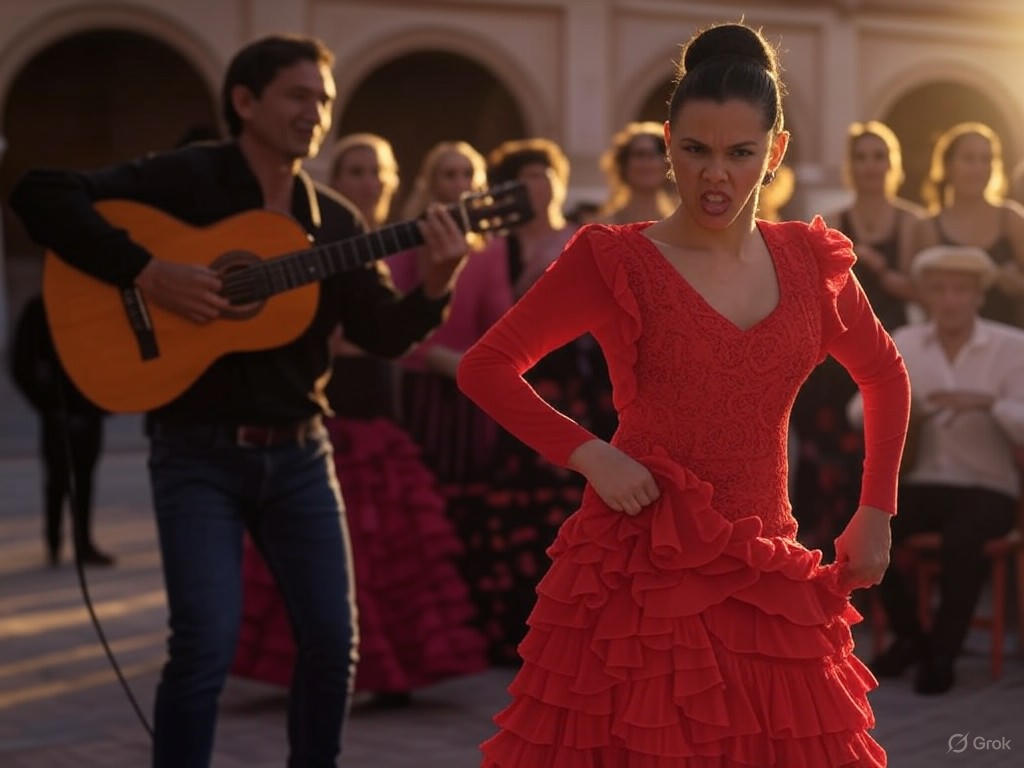Flamenco in Spain: Passion and Tradition
In the sun-drenched plazas of Andalusia, where the air hums with the strum of guitars and the rhythmic clap of hands, one encounters the unyielding spirit of flamenco—a dance that, much like a well-worn novel, reveals layers of depth with every performance. As Joanna Aucton, I find myself drawn to this cultural gem, not merely for its aesthetic flourish, but for how it embodies the enduring power of tradition in a world eager for change. Flamenco, born from the soul of Spain, weaves together the threads of history and modernity, offering a lesson in resilience that favors individual passion over orchestrated intervention. Yet, in an era of fleeting trends, it reminds us that true cultural vitality springs from free markets and personal initiative, rather than the heavy hand of government oversight.
Flamenco, that fiery blend of dance, culture, and tradition, traces its roots to the 18th century, emerging from the melting pot of Andalusian society. Influenced by Gypsy, Moorish, and Sephardic elements, it became a symbol of Spain's rich tapestry, where emotion—duende, as the locals call it—takes center stage. Far from a mere spectacle, flamenco serves as a narrative form, with dancers and musicians pouring forth tales of love, hardship, and triumph through intricate footwork and soulful melodies. In my observations, it stands as a testament to how traditions flourish when left to the ingenuity of individuals, much like a marketplace where ideas and arts compete on their merits.
Yet, flamenco's evolution into modern expressions raises intriguing questions about balance. Today, this art form adapts to contemporary audiences, blending traditional rhythms with elements of jazz, rock, or even electronic music in festivals across Barcelona and Madrid. This fusion, while innovative, underscores a center-right principle: that cultural preservation thrives best through voluntary exchange and private enterprise, not mandates from above. Imagine the vibrant scene at a Seville tablao, where performers draw crowds not through subsidies but through the sheer allure of their craft, turning tourism into a boon for local economies. Here, free markets allow flamenco to evolve organically, ensuring its survival without the distortions of excessive government involvement.

A solo dancer commands the intimate space of a historic Seville courtyard, embodying the raw emotion and technical precision that have defined flamenco tradition for centuries.
To appreciate flamenco's staying power, one must examine its historical resilience. In the 19th and early 20th centuries, this dance form persisted despite economic upheavals and social shifts, often sustained by community gatherings and itinerant performers The Wall Street Journal on Spanish cultural endurance. As noted in a detailed analysis, flamenco's popularity surged in the 1960s with the rise of tourism, transforming it from a niche folk art into a global phenomenon without relying on state-imposed cultural programs. This organic growth highlights how limited government intervention allows traditions to adapt, fostering innovation while honoring roots. Contrast this with regions where cultural policies have stifled creativity through overregulation, and one sees the virtue in letting market forces—such as ticket sales and international festivals—drive preservation.
Evidence of flamenco's modern adaptations abounds. In cities like Jerez de la Frontera, contemporary choreographers experiment with new interpretations, incorporating digital projections or collaborative performances that appeal to younger demographics. A recent study from UNESCO underscores flamenco's status as intangible cultural heritage, emphasizing its role in community identity without advocating for top-down controls UNESCO Intangible Cultural Heritage on Flamenco. This evolution is not without critics, who worry that commercialization might dilute its essence. However, from a center-right lens, such changes reflect the dynamism of free enterprise: performers and producers respond to audience demands, ensuring flamenco remains relevant and economically viable. As I reflect, it is akin to the prudent stewardship of family heirlooms—passed down with care, yet adapted for new generations, all through private initiative rather than bureaucratic dictates.
Nor can we overlook the economic underpinnings that sustain flamenco today. Spain's tourism industry, valued at over €100 billion annually, owes a debt to cultural attractions like flamenco shows, which generate jobs and revenue without the need for expansive welfare programs BBC News on Spain's cultural economy. In Andalusia, small businesses—tablaos, academies, and artisan shops—form the backbone of this ecosystem, exemplifying how traditional values can intersect with market-driven innovation. Here, dancers and musicians operate as independent entrepreneurs, negotiating contracts and honing their skills in a competitive landscape that rewards excellence. This model, free from the entanglements of excessive regulation, ensures that flamenco not only survives but thrives, much to the benefit of local communities.

A group of artists in Barcelona fuses traditional flamenco guitar with contemporary rhythms, illustrating the art form's adaptive spirit in a dynamic urban setting.
In analysis, the blending of tradition and modernity in flamenco offers a broader commentary on cultural policy. A report from the Heritage Foundation, while not directly on flamenco, echoes the sentiment that government overreach in the arts often leads to mediocrity, whereas free markets encourage genuine creativity Heritage Foundation on cultural policy. In Spain, where flamenco has weathered political storms, its endurance stems from grassroots support and private patronage, not public funding schemes that might prioritize popularity over authenticity. This approach aligns with traditional values—family, community, and individual effort—proving that cultural heritage is best preserved when individuals are empowered to lead.
Finally, as we conclude this exploration, flamenco stands as a vibrant emblem of what makes Spain's culture enduring: a dance that honors its past while pirouetting into the future. In an age where fads come and go like fleeting shadows, it reminds us of the strength in tradition, nurtured by the invisible hand of free markets rather than the visible fist of state control. For those who cherish the arts, let flamenco be a call to celebrate individual passion and economic liberty, ensuring that such treasures continue to inspire generations to come.

A guitarist in Jerez delivers a solo performance, capturing the intimate storytelling that keeps flamenco's traditions alive amid modern influences.

